Michael Clark Company, th, Tate Modern
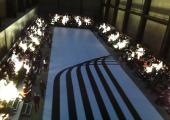

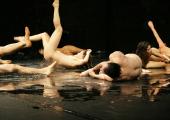
When asked if I wanted to go and see two dozen naked Canadians doing audience participation, the answer was, self-evidently, nonononononononono. And then, for good measure, NO. Well, I’m here to tell you, I was wrong. Wrong, wrong, wrong. And I apologise to Dave St-Pierre and Company for my foolish prejudices. Un Peu de Tendresse Bordel de Merde ("A little tenderness, for Pete's sake") is an amazing evening of theatre.

Being a choreographer is harder than it looks. Steps, movement, are just the beginning. On top of that you need to have a sense of theatricality, and then, even more, you need to be able to convey your ideas, through movement alone, to the audience. On these counts, Bern:Ballett’s visit to the Linbury fails to make the grade.

Paul Taylor's Roses is called Roses because, well, because it is. There are no roses here, no flowery sentiment, no overwrought angst and emotion. This, one of Taylor’s most beautifully serene works, is the smell of roses on a still May evening: fleeting, evanescent and heart-breakingly beautiful. It is also some of the most magisterial - and startlingly original - choreography, even a quarter of a century after it was first made.
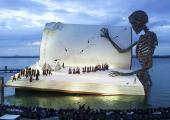
Be different - take a festival break in Europe instead of the UK, and catch a different landscape. While artists in both new music and classical are constantly circling the world in search of more picturesque settings, you can find your alternative Glasto in Denmark or Belgium, or you can find favourite chamber musicians in Austria rather than London. theartsdesk brings you listings of this year's major European festivals: rock in Sonar, Sziget and Stradbally, opera in Bayreuth, Verona and Salzburg, dance in Vienna, Epidauros and Spoleto, visual arts in Istanbul, Zurich and Avignon. This is the indispensable clickable guide to a cultured break in Europe.
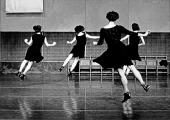
Sometimes, watching contemporary dance, you feel that no choreographer has ever known a happy moment – such angst, such grief, such terrible agony rolls over the footlights out to the audience that arriving at the theatre feeling mildly content can seem like an act of subversion. On their last night of this too-short season, however, Anne Teresa de Keersmaeker’s Rosas company produced one of her most joyous and enjoyable pieces. For as the choreographer reminds us here, joy, cheerfulness and even sheer good temper are also emotions, and also worth exploring.
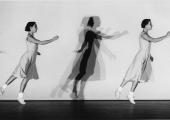
How do simple things get complicated? How do they stay simple once they are complicated? These might, perhaps, be the questions from which choreographer Anne Teresa de Keersmaeker, starts. But in fact, she starts, as all great choreographers do, with the music. “Music is always my first partner,” she once said. And in Fase: Four Movements to the Music of Steve Reich, three linked duets and one solo, there are indeed three people on stage: de Keersmaeker herself, the wonderful Tale Dolven, and Steve Reich, absent but ever present.
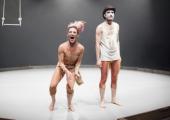
Reports of ballet’s death are greatly exaggerated, but I’m not equally sanguine about the craft of choreography. Having sat dumbstruck through the four limping dogs masquerading as finalists in The Place’s prize “for dance” [sic] on Tuesday, I found myself amazed, simply amazed, all over again at the fecundity and sheer knowledge of Ashton’s Cinderella, having its umpteenth revival last night at the Royal Ballet.

Photography is linked closely with memory. Photographs help us recall family, friends, holidays, and it can attest to an event. But one could argue that it actually serves a purpose of forgetting. As we are immersed in a digital age, the photograph becomes a series of binary numbers which doesn’t exist until it is written or printed, and which can be erased as easily as it is captured. Photographs are now as close to human recall as technology will allow. Daniel Linehan's Montage for Three last night was a perfomance piece which tried to address that.
The Arts Council’s rearrangement of the dance world by its handling of its 15 per cent subsidy cut shows no change in its persistence in choosing to prefer bureaucratic structures to talent. The 15 per cent cut has been handed straight over to all the ballet companies, with no evidence of strategic thinking about the implications for numbers of dancers, productions or programming. But it’s in the area of contemporary dance that my first impression is of an urge at HQ to pass the buck of decisions to the regions to handle.